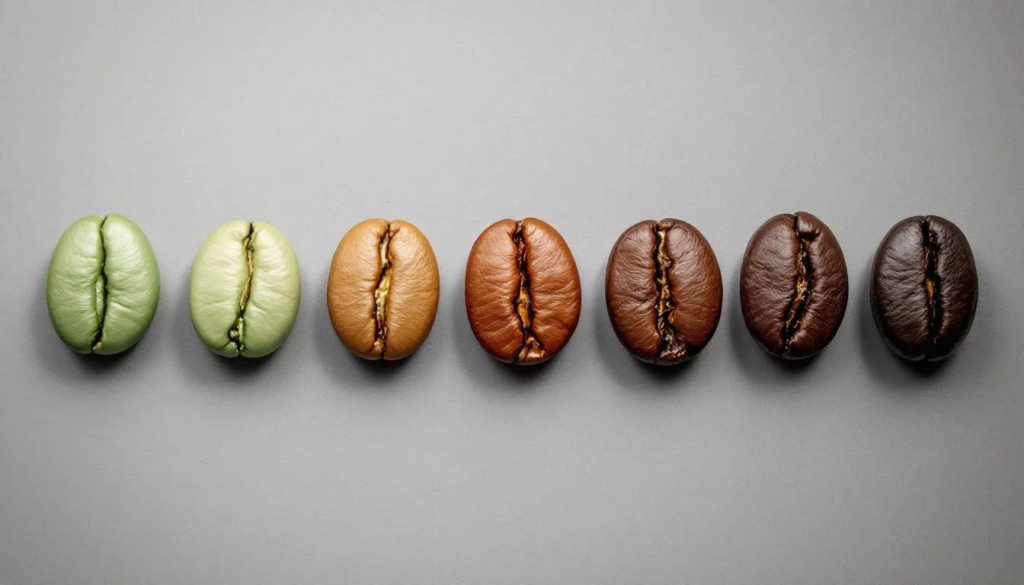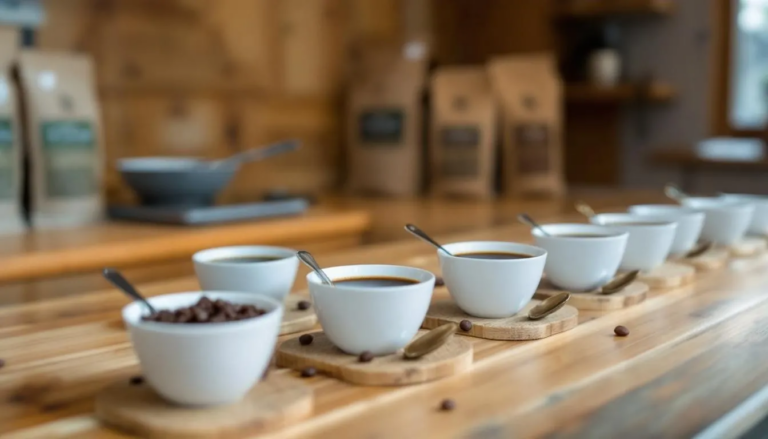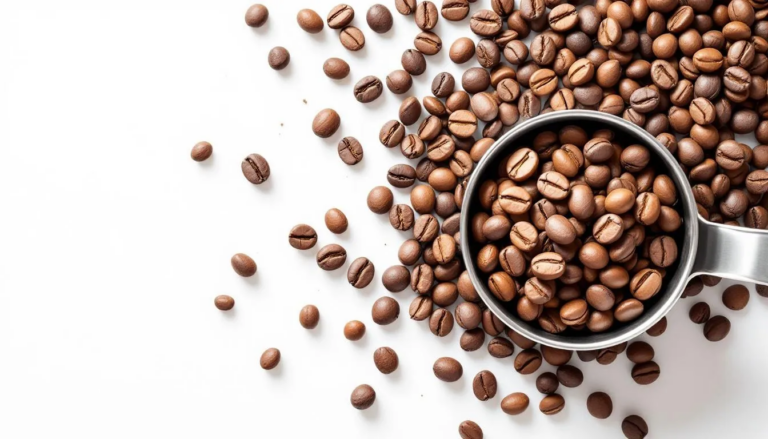Nothing ruins a perfect morning like a cup of stale coffee. While coffee beans don’t spoil like fresh produce, understanding the shelf life of coffee beans is crucial for maintaining that rich, complex flavor coffee lovers crave. The difference between properly stored freshly roasted coffee beans and neglected ones can make or break your daily brew.
Most coffee drinkers assume that coffee beans last indefinitely, but this misconception leads to countless disappointing cups. Do coffee beans expire? While they don’t spoil in the same way as fresh produce, coffee beans do expire in the sense that they gradually lose freshness and flavor over time. Proper storage is essential to slow this process and ensure your coffee remains enjoyable. The truth is that coffee freshness directly impacts every aspect of your brewing experience, from aroma to taste complexity. Once you understand how to store coffee beans properly and recognize when they’ve passed their prime, you’ll never settle for subpar coffee again.
This comprehensive guide will walk you through everything you need to know about coffee bean storage, from the science behind freshness degradation to practical daily habits that keep your beans at peak flavor. Whether you’re buying coffee in bulk or just want to maximize your weekly coffee purchase, these strategies will transform your home brewing game.
Understanding Coffee Bean Shelf Life
The shelf life of coffee begins the moment roasting ends. Unlike the expiration dates on dairy products, coffee beans don’t become unsafe to consume after a certain period. While coffee doesn’t truly expire in the sense of becoming dangerous, it does lose quality and flavor over time, so when people ask “does coffee expire,” it’s important to note that coffee becomes stale rather than unsafe.
Instead, they gradually lose the volatile compounds and natural oils that create coffee’s signature flavor and aroma profiles.
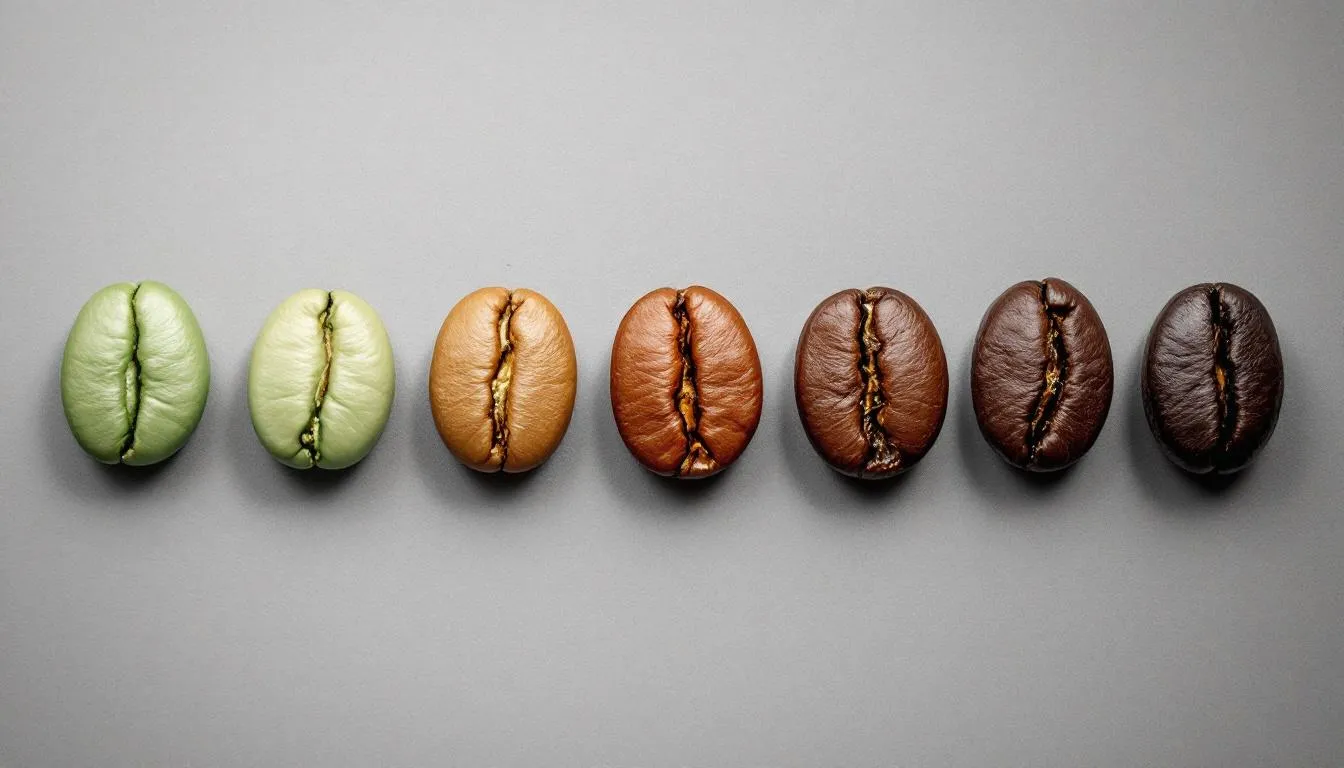
Oxidation is the primary enemy of fresh coffee. This chemical reaction between oxygen and the compounds in roasted coffee beans begins immediately after roasting and continues relentlessly. As oxidation progresses, the oils evaporate and the complex flavor molecules break down, leaving behind the flat, stale taste that characterizes old coffee beans.
The roasting process creates carbon dioxide within the bean structure, which initially helps protect against oxidation by pushing oxygen away from the bean’s surface. However, as this carbon dioxide escapes over the first few days after roasting, oxygen gradually penetrates deeper into the bean, accelerating the staling process.
Coffee beans begin losing their peak flavor within days of roasting, though they remain safe to consume for months. The industry distinguishes between the “peak freshness” period when coffee delivers optimal flavor, and the much longer “safe consumption window” when coffee remains drinkable but increasingly lacks complexity and vibrancy.
How Long Different Types of Coffee Beans Last
Understanding how long different coffee preparations maintain their quality helps you make smarter purchasing and storage decisions. Here’s a comprehensive breakdown of coffee bean shelf life across various forms:
| Coffee Type | Peak Freshness | Safe Consumption | Storage Notes |
|---|---|---|---|
| Green beans | 12-24+ months | 2+ years | Longest shelf life, requires specialized storage |
| Roasted whole beans (unopened) | 2-4 weeks | 6-12 months | Vacuum/nitrogen packaging extends life |
| Roasted whole beans (opened) | 2-3 weeks | 6-8 weeks | Quality drops rapidly after opening |
| Ground coffee (unopened) | 1-2 weeks | 3-5 months | Pre-ground loses quality quickly |
| Ground coffee (opened) | 3-7 days | 1-2 weeks | Use immediately for best results |
An unopened pack of coffee beans or ground coffee can last for several months if stored properly. To maintain freshness and aroma, always keep the packaging sealed until use and store the unopened pack in a cool, dry place.
Green Coffee Beans
Unroasted green beans offer the longest shelf life of any coffee form, maintaining quality for up to a year or more when properly stored. These raw coffee beans contain significantly less oil on their surface compared to roasted varieties, making them naturally resistant to oxidation and rancidity.
Green beans require specific storage conditions to maintain their longest shelf life. Keep them in a cool dark and dry environment with humidity levels below 60% and temperatures under 70°F. Many coffee professionals store green beans in burlap sacks or specialized breathable containers that allow necessary airflow while protecting against moisture absorption.
The processing method affects how long coffee beans remain viable. Honey-processed beans, where some fruit mucilage remains during drying, often stay fresh longer than dry-processed varieties due to lower water activity levels. However, all green beans must be kept completely dry to prevent mold growth, which can ruin entire batches.
Roasted Whole Coffee Beans
Freshly roasted coffee beans enter a 24-72 hour degassing period immediately after roasting, during which they release carbon dioxide produced during the roasting process. Coffee experts recommend waiting until this degassing completes before brewing, as the CO2 can interfere with proper water extraction.
The peak flavor window for roasted beans typically opens around day four post-roast and extends for 2-3 weeks under optimal storage conditions. Lighter roasts, due to their denser structure, retain more complex acidity and benefit from a longer rest before brewing. As a result, lighter roasts often maintain flavor quality slightly longer than darker roasts, sometimes up to 4-6 weeks, because their denser structure and lower oil content resist oxidation more effectively.
Unopened packages of roasted coffee beans can remain fresh for 6-12 months when stored in vacuum sealed bag or nitrogen-flushed packaging. These specialized containers remove oxygen and replace it with inert gas, dramatically slowing the oxidation process. Once opened, however, these same beans should be consumed within 2-4 weeks for optimal flavor.
Ground Coffee
Grinding dramatically accelerates coffee degradation by increasing surface area exposure to air by thousands of times. Freshly ground coffee delivers its most intense aroma within 15-30 minutes of grinding, after which volatile compounds rapidly dissipate into the atmosphere.
Pre ground coffee faces significant freshness challenges. Even when vacuum-sealed, ground beans lose substantial flavor complexity within weeks of grinding. Commercial ground coffee may retain moderate quality for 3-5 months unopened, but once exposed to air, deterioration becomes rapid and obvious.
The texture of ground coffee also changes as it ages. Fresh grounds feel slightly moist and tacky due to residual oils, while stale coffee becomes dry and powdery. This physical change parallels the chemical breakdown occurring within the coffee particles.
To best store ground coffee, use an airtight container and keep it in a cool, dry place to help preserve its freshness for as long as possible.
Coffee Pods and Instant Coffee
Shelf Life of Coffee Pods
Coffee pods offer a convenient and consistent way to enjoy a fresh cup of coffee, and their shelf life is one of their biggest advantages. Thanks to their airtight packaging, most coffee pods can maintain their flavor and aroma for up to a year when stored correctly. The shelf life of coffee pods depends on the quality of the seal, the type of coffee inside, and the packaging material, all of which are designed to keep out air, moisture, and light.
To get the most out of your coffee pods, always check the “best by” or expiration date printed on the box. While coffee pods are designed to stay fresh for a long time, their flavor and aroma are at their best when used within this recommended window. For optimal coffee freshness, store your pods in an opaque container or bag, away from direct sunlight and humidity. This extra layer of protection helps preserve the life of coffee pods and ensures every brew delivers the rich taste you expect. By keeping your coffee pods in a cool, dry place and shielding them from light, you’ll enjoy a consistently great cup of coffee every time.
Storing Instant Coffee for Freshness
Instant coffee is prized for its convenience and impressive shelf life, making it a staple in many kitchens. When stored properly, instant coffee can remain fresh and flavorful for years. The key to maintaining the shelf life of instant coffee is to keep it in an airtight container, which protects it from air and moisture—two factors that can quickly diminish its flavor and aroma.
For best results, store instant coffee in a cool dark place, such as a pantry or cupboard, away from heat sources and direct sunlight. This helps prevent the coffee from absorbing unwanted odors and losing its signature taste. Always reseal the container tightly after each use to keep your coffee fresh and prevent clumping caused by humidity.
If you want to extend the shelf life even further, consider freezing instant coffee. Place it in an airtight container or freezer-safe bag to guard against freezer burn and moisture. Freezing can help preserve the flavor and aroma of instant coffee for an even longer period, ensuring you always have a fresh cup ready when you need it. By following these simple storage tips, you can enjoy the convenience and great taste of instant coffee for months—or even years—to come.
Proper Coffee Bean Storage Methods
Effective coffee storage requires protecting beans from four primary enemies: air, moisture, heat, and light. Each of these elements accelerates the chemical processes that degrade coffee quality, so your storage strategy must address all four simultaneously.
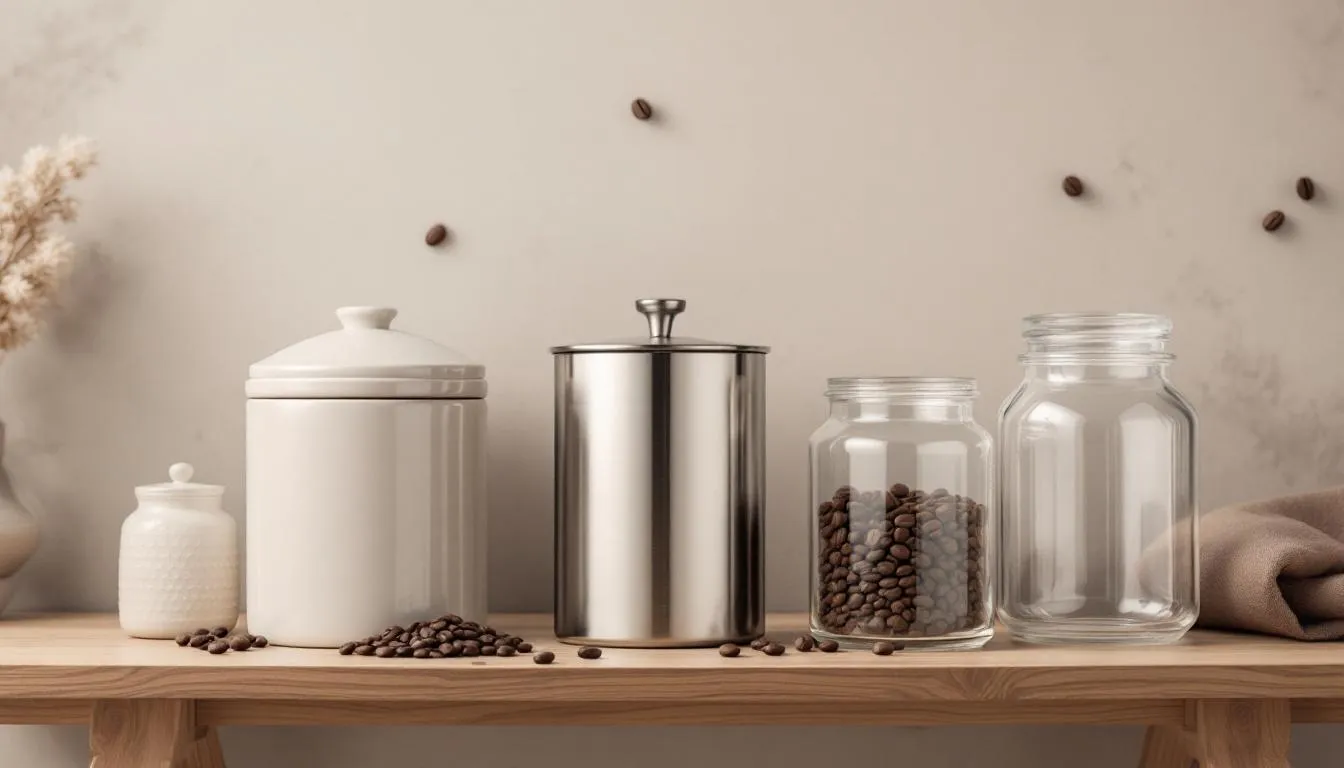
When considering storage containers, a glass jar can be an attractive, airtight option for keeping coffee beans fresh. However, if you use a glass jar, be sure to store it in a dark place to prevent light from damaging the beans.
Temperature control is crucial for maintaining coffee freshness. Store coffee in areas that remain consistently between 60-70°F, avoiding locations near heat sources like ovens, dishwashers, or sunny windows. Temperature fluctuations cause expansion and contraction that can break down bean structure and accelerate oil migration to the surface.
Humidity management is equally important. Relative humidity should stay below 60% to prevent moisture absorption, which can lead to mold growth and rapid flavor degradation. In particularly humid climates, consider using desiccant packets in your storage containers to absorb excess moisture.
Best Storage Containers
Opaque containers provide the best protection against light-induced degradation. Ceramic containers, stainless steel canisters, and food-grade metal containers with tight-fitting lids offer excellent light protection while maintaining airtight seals. These materials don’t absorb odors or flavors, ensuring your coffee tastes exactly as intended.
One-way valve bags serve a specific purpose for freshly roasted beans. These specialized containers allow carbon dioxide to escape during the degassing period while preventing oxygen from entering. Many commercial roasters use this packaging to maintain freshness during shipping and initial storage.
Vacuum sealed containers remove air from around the beans, significantly slowing oxidation. Some coffee enthusiasts invest in vacuum canisters that can be resealed after each use, though these work best for coffee that will be consumed within a few weeks rather than long term storage.
Avoid clear glass containers unless you plan to store them in completely dark locations. While glass jars look attractive and don’t impart flavors, they offer no protection against light damage. If you must use glass, choose amber or opaque versions and keep them in dark cupboards.
Ideal Storage Locations
A cool dark pantry or cupboard away from heat sources provides ideal conditions for coffee storage. Avoid storing coffee above the stove, near the dishwasher, or in cabinets that receive direct sunlight during any part of the day. These locations subject coffee to temperature fluctuations that accelerate staling.
Consistency matters more than absolute temperature. A location that maintains steady conditions, even if slightly warmer than ideal, often preserves coffee better than a cooler spot with frequent temperature swings. This is why many coffee professionals prefer interior pantry shelves over locations near exterior walls.
Kitchen islands and countertops seem convenient but often expose coffee to more variables than enclosed storage. If you must keep coffee accessible on counters, use completely opaque containers and position them away from appliances and windows.
Refrigerator and Freezer Storage
Coffee storage in refrigerators and freezers requires careful consideration of the risks versus benefits. While cold temperatures can slow degradation, the moisture and odor issues in most home refrigerators often cause more problems than they solve. If you choose to freeze coffee beans to extend their shelf life, portion them into airtight containers or bags and seal tightly to prevent moisture and odor absorption, only thawing what you need to preserve freshness.
Why You Shouldn’t Store Coffee in the Fridge
Refrigerators create several problems for coffee storage. The high humidity environment promotes moisture absorption, which can quickly ruin coffee beans. Every time you remove coffee from the fridge, condensation forms on the cold beans when they hit room temperature air, introducing moisture directly to the coffee surface.
Coffee acts like a sponge for odors, readily absorbing aromas from all the odors present in your refrigerator. Onions, garlic, leftovers, and cleaning products can all taint your coffee’s flavor profile. Once coffee absorbs these foreign odors, no amount of proper brewing can restore the intended taste.
Temperature fluctuations in refrigerators also work against coffee preservation. The frequent opening and closing of refrigerator doors, combined with the warming cycles of automatic defrost systems, create the kind of temperature variations that accelerate coffee degradation.
Freezing Coffee Beans: Pros and Cons
Freezing coffee beans can extend their useful life up to a year when done correctly, making it viable for coffee lovers who buy in bulk. The key is proper preparation: portion coffee into single-use amounts, remove as much air as possible, and double-bag to prevent freezer burn and odor absorption.
Proper thawing technique is crucial for frozen coffee success. Remove only the portion you plan to use and let it thaw overnight at room temperature while still sealed. This prevents condensation from forming on the beans. Use thawed coffee within 5-7 days and never refreeze previously frozen beans.
The trade-offs of freezing include some loss of aromatic complexity and flavor nuance, particularly with repeated freeze-thaw cycles. While frozen coffee maintains basic freshness characteristics, it rarely matches the full sensory experience of properly stored room-temperature beans. Consider freezing only for long term storage of excess coffee rather than regular daily use.
Signs Your Coffee Beans Have Gone Stale
Learning to identify stale coffee beans protects you from disappointing brewing experiences and helps you optimize your coffee purchasing habits. As coffee beans age, they lose freshness and start losing flavor, making it important to recognize the signs of staleness. Fresh coffee provides clear visual, aromatic, and taste indicators that become muted or absent as beans age.
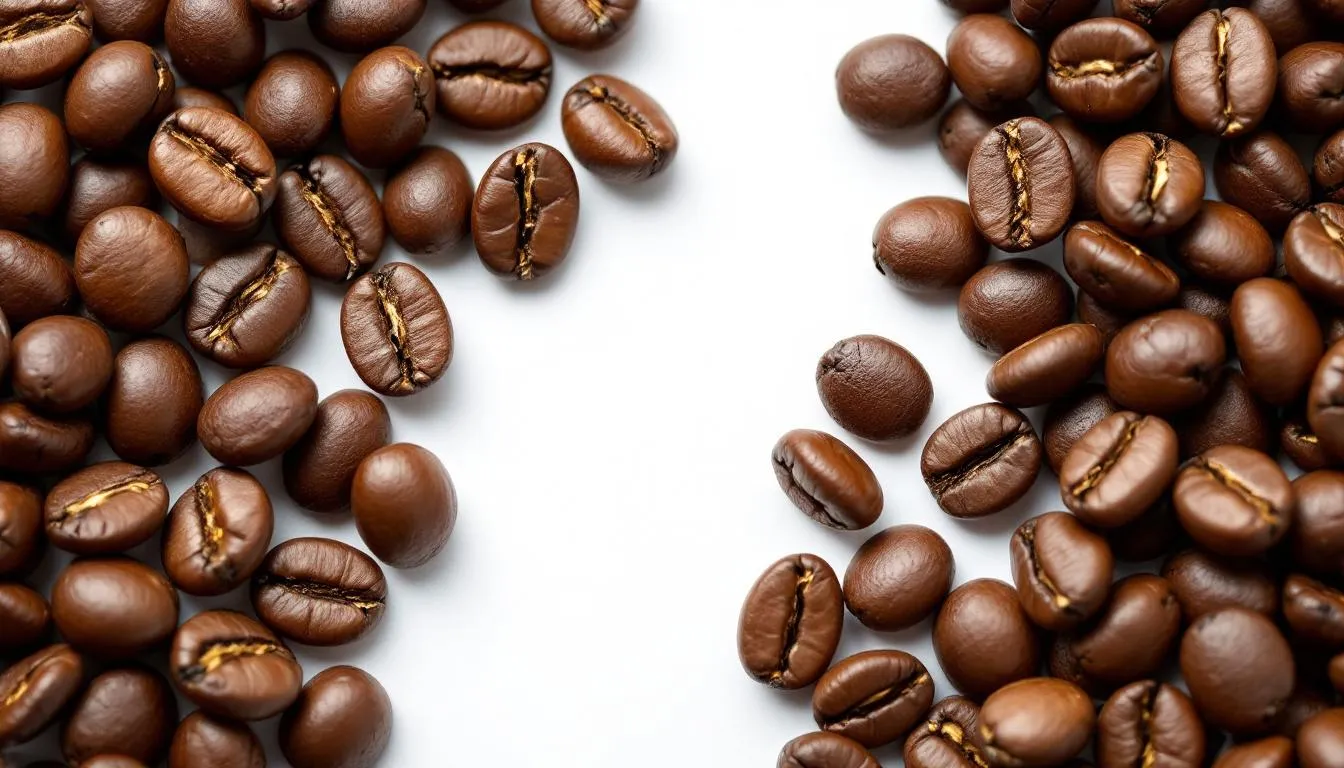
Visual and Aromatic Tests
Fresh coffee beans display a noticeable glossy sheen from natural oils migrating to the surface during and after roasting. As coffee ages, this sheen fades to a dull, matte finish that indicates oil degradation and moisture loss. The contrast between fresh and stale beans becomes obvious once you know what to look for.
The aroma test provides the most immediate freshness assessment. Freshly roasted coffee beans release intense, complex aromas when you open their container. Stale coffee beans smell muted, dusty, or sometimes musty. If you have to work to detect any coffee aroma, your beans have likely passed their peak freshness period.
The bloom test offers a definitive visual indicator of coffee freshness. When you pour hot water over freshly ground coffee, vigorous bubbling occurs as carbon dioxide escapes from the grounds. This “bloom” indicates active degassing and fresh coffee. Old coffee beans produce little to no bubbling because they’ve already released their CO2 and lost their vibrancy.
Ground coffee texture changes provide another freshness indicator. Fresh grounds feel slightly moist and tacky from residual oils, while stale grounds become dry and powdery. This textural change directly correlates with flavor loss and brewing performance.
Taste Indicators
Stale coffee produces a distinctly flat cup that lacks the complexity and vibrancy of fresh coffee. Instead of bright, nuanced flavors, old coffee beans deliver one-dimensional tastes that often lean toward bitter or sour notes. The absence of positive flavor characteristics is often more noticeable than the presence of negative ones.
Coffee that tastes predominantly bitter or sour, without balancing sweetness or acidity, often indicates staleness rather than brewing problems. While brewing technique affects flavor, properly stored fresh beans should produce a balanced cup even with imperfect brewing methods.
Loss of aroma in the brewed cup provides another clear staleness indicator. Fresh coffee fills the room with pleasant aromas during brewing and drinking. Stale coffee produces minimal aromatic experience, leaving you with liquid that tastes like coffee but lacks the sensory richness that makes great coffee memorable.
Factors Affecting Coffee Bean Shelf Life
Multiple variables influence how long coffee beans maintain peak quality, from roasting decisions made weeks ago to daily storage choices in your kitchen. Using airtight containers, vacuum sealing, or nitrogen-flushed packaging can help coffee beans stay fresher for a longer period by preserving their flavor and aroma. Understanding these factors helps you select and store coffee more strategically.
Roast Level Impact
Light roasts typically stay fresh longer than darker roasts due to their denser bean structure and lower surface oil content. The shorter roasting time preserves more of the bean’s original cellular structure, creating natural barriers against oxidation. Light roasts can maintain peak flavor for 4-6 weeks under proper storage conditions.
Dark roasts reach higher temperatures during roasting, creating more surface oils and breaking down more cellular structure. This makes dark roasted coffee beans more vulnerable to rapid degradation, with optimal flavor windows typically lasting 2-3 weeks. The visible oils on dark roasted beans, while contributing to flavor intensity, also accelerate rancidity when exposed to air.
Medium roasts offer a balance between flavor development and shelf life, typically maintaining quality for 3-4 weeks. The moderate roasting level develops flavor complexity while preserving enough structural integrity to resist rapid staling.
Bean Origin and Processing
Arabica beans, prized for their complex flavor profiles, tend to be more delicate than robusta varieties and may lose their subtle characteristics more quickly under poor storage conditions. However, their lower oil content compared to some robusta beans can actually help them resist rancidity in proper storage.
Processing methods affect coffee bean storage characteristics. Washed coffees, where fruit is removed before drying, often have lower residual moisture and may store slightly longer than natural process coffees. Natural process beans, dried with fruit intact, sometimes retain more oils that can accelerate degradation if not stored properly.
Higher altitude coffees typically produce denser beans that resist staling longer than beans grown at lower elevations. The slower maturation process at altitude creates tighter cellular structure that better protects against oxidation and moisture absorption.
Single-origin coffees may show flavor changes more dramatically than blends because their characteristics aren’t masked by other beans. While this makes freshness more noticeable, it also means single-origins require more careful attention to storage timing and conditions.
Maximizing Your Coffee’s Freshness
Developing smart coffee buying and storage habits ensures you consistently enjoy coffee at its peak quality while minimizing waste from stale beans. Once opened, coffee begins to lose its flavor over time, so it’s best to consume opened coffee within 3 to 4 weeks and store it properly to maintain freshness. Small changes in your coffee routine can dramatically improve your daily brewing experience.
Smart Buying Strategies
Purchase only what you can consume within 2-3 weeks to ensure you’re always brewing with fresh coffee. This approach requires more frequent shopping but guarantees optimal flavor in every cup. Calculate your daily coffee consumption and buy accordingly rather than stockpiling large quantities.
Seek out local roasters who roast date their packages and aim for coffee roasted within the past 2-14 days. Many specialty roasters roast multiple times per week, making truly fresh coffee accessible to regular customers. Establish relationships with roasters to learn their roasting schedules and get the freshest possible beans.
Coffee subscription services can deliver freshly roasted coffee beans directly to your door on predictable schedules. Many services allow you to specify delivery frequency based on your consumption patterns, ensuring a steady supply of fresh coffee without overbuying.
When buying coffee, check roast dates rather than expiration dates. Roast dates tell you exactly when the coffee was processed, while generic expiration dates often reflect conservative estimates that don’t account for proper storage. Coffee with roast dates within the past week will almost always provide superior flavor to older beans.
Daily Freshness Habits
Grind coffee beans immediately before brewing to maximize flavor extraction and aromatic intensity. Invest in a quality burr grinder that produces consistent particle sizes without generating excessive heat that can damage coffee compounds. Even the best storage can’t compensate for grinding too far in advance.
Store coffee beans in portions that match your brewing frequency. If you brew coffee twice daily, consider dividing your weekly coffee purchase into smaller containers that you open sequentially. This minimizes air exposure to the majority of your coffee while ensuring easy access to your daily supply.
Keep your storage containers clean and dry between coffee batches. Coffee oils can become rancid and contaminate fresh beans, so wash containers thoroughly and allow them to air dry completely before refilling. Replace storage containers annually or when they develop persistent odors.
Track your coffee’s roast date and consumption timeline to develop awareness of how freshness affects your daily cups. Most coffee lovers notice significant quality differences once they start paying attention to freshness factors, leading to better purchasing and storage decisions.
What to Do With Stale Coffee Beans
Rather than discarding coffee that’s past its prime for brewing, numerous practical applications can give your old coffee beans and grounds new purpose while reducing waste. Expired coffee beans and old beans, though no longer ideal for brewing due to loss of freshness and taste, can still be repurposed for uses like deodorizing, composting, or even crafts and gardening.
Household and Garden Uses
Coffee grounds excel as natural deodorizers throughout your home. Place dried used grounds in small containers in refrigerators, cars, or shoe closets to absorb unpleasant odors. The grounds continue working for several weeks before needing replacement, making this an economical and eco-friendly solution.
Composting coffee grounds adds nitrogen-rich organic matter to garden soil. Use coffee grounds as approximately 20% of your total compost volume, balancing them with carbon-rich materials like dried leaves or paper. The grounds break down quickly and improve soil structure while providing nutrients for plant growth.
Create natural body scrubs by mixing coffee grounds with coconut oil or olive oil. The gentle abrasiveness removes dead skin cells while residual caffeine may provide temporary skin tightening effects. This repurposing works particularly well with grounds from light to medium roasted coffee.
Whole stale coffee beans serve decorative purposes in clear containers, providing attractive fillings for vases or candle holders. While these beans shouldn’t return to brewing use after decorative display, they can add coffee-themed ambiance to kitchens or coffee stations.
Culinary Applications
Stale coffee works well in cold brew applications where extended steeping times can extract remaining flavors despite diminished aromatic compounds. The cold brewing process often masks the flat characteristics of older coffee while still providing caffeine and basic coffee flavor.
Incorporate ground coffee into chocolate desserts where other strong flavors complement and mask any staleness. Coffee enhances chocolate in tiramisu, ice cream, or baked goods, where the cooking process transforms the coffee and integrates it with other ingredients.
Use stale coffee in meat rubs or marinades where its earthy, slightly bitter notes complement savory flavors. Coffee rubs work particularly well with red meats, adding complexity without requiring the bright acidity or aromatics of fresh coffee.
Consider stale coffee for cocktail applications like espresso martinis or coffee liqueurs, where alcohol and other ingredients mask freshness issues while still providing recognizable coffee character. The concentrated flavors in cocktails often overwhelm subtle staleness that would be obvious in regular brewing.
Conclusion
Understanding the shelf life of coffee beans transforms your daily coffee experience from hit-or-miss to consistently excellent. Fresh coffee doesn’t just taste better—it provides the complex flavors and aromas that make each cup a genuine pleasure rather than mere caffeine delivery.
The key takeaways for maximizing coffee freshness focus on timing, storage, and awareness. Buy coffee in quantities you can consume within 2-3 weeks, store it in airtight containers away from heat and light, and grind only what you need for each brewing session. These simple practices ensure your investment in quality coffee pays off in superior flavor.
Remember that coffee freshness is a journey, not a destination. Even the best storage methods can’t stop degradation entirely—they can only slow it down. The goal is to enjoy your coffee during its peak flavor window while developing habits that consistently deliver the best possible cup.
Start implementing these storage strategies today, and you’ll notice immediate improvements in your coffee’s flavor and aroma. Your taste buds will thank you, and you’ll never want to return to drinking stale coffee again.
